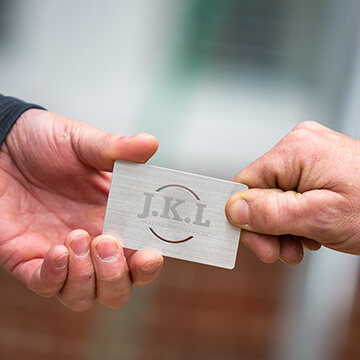Scaffolding is a crucial component in the construction industry. It provides temporary support structures, ensuring the safety and efficiency of building projects. Whether it is for domestic, commercial, or industrial purposes, scaffolding is something that you simply cannot do without.
This blog will outline seven key reasons why scaffolding is essential for construction projects. If you think you’d rather learn from a scaffolding expert, feel free to reach out to us. We’d love to help with expert consultation and quality scaffolding solutions tailored to your project. Call 0800 061 4800 or email info@jklscaffolding.co.uk today.
Understanding What Scaffolding Is
Scaffolding is a temporary framework used to support workers and materials during the construction, maintenance, and repair of buildings and other structures. It consists of metal pipes or tubes, wooden boards, and couplers that form a stable platform.
Scaffolding allows workers to perform tasks at elevated heights safely and efficiently. To avoid common scaffolding mistakes, proper training and setup are crucial for ensuring worker safety and project efficiency.
Wondering why your construction or building project needs scaffolding? Let us help! We will offer expert guidance and high-quality scaffolds tailored to your projects, however big or small it is!
Seven Reasons Why Scaffolding Is Essential For Construction
1. Safety
Scaffolding provides a secure platform for workers. It reduces the risk of falls and injuries. With guardrails, non-slip surfaces, and proper anchorage, scaffolding ensures that safety measures are meticulously followed. It protects both workers and the public from potential hazards associated with construction activities.
Regular safety checks and maintenance further enhance its reliability, making scaffolding an indispensable element in safeguarding human lives on construction sites. Partnering with the right scaffold company for your project ensures these safety measures are properly implemented.
2. Access
Scaffolding enables workers to reach challenging areas with ease. It provides access to elevated heights and hard-to-reach places, ensuring that every part of the building, including corners and high ceilings, is accessible. This is crucial for tasks such as painting, plastering, and installing windows.
Scaffolding can be adjusted and extended as needed. This means workers can perform their duties without difficulty. Scaffolding also supports heavy tools and materials, facilitating seamless movement and access during construction. Different types of scaffolding, like suspended or mobile, can cater to specific project requirements.
3. Efficiency
By providing a stable and secure platform, scaffolding allows workers to carry out their tasks without interruptions. This reduces downtime and increases productivity. With scaffolding, multiple workers can operate simultaneously at different heights, streamlining the workflow and ensuring timely project completion.
4. Support
Scaffolding is designed to bear significant loads, making it essential for heavy-duty construction tasks. It provides a stable base for workers to perform their duties safely, even when handling heavy equipment or materials. The reliability of scaffolding in providing adequate support enhances overall project safety and effectiveness.
5. Versatility
Scaffolding systems are available in different types and configurations, such as suspended, supported, or mobile scaffolding, catering to specific construction needs. This allows scaffolding to be used in diverse applications, from simple home renovations to complex high-rise constructions.
6. Cost-Effective
Using scaffolding can lead to significant cost savings in the long run. By improving efficiency and reducing the risk of accidents, scaffolding helps in lowering overall construction costs.
Scaffolding also reduces the need for expensive safety measures and equipment, as it inherently provides a secure working environment. Additionally, scaffolding rental services offer cost-effective solutions, which means construction companies can access high-quality scaffolding without the upfront investment of purchasing it.
This financial advantage makes scaffolding a smart choice for any construction project. Regular scaffolding inspections help in avoiding costly delays due to safety violations or structural failure.
7. Quality
Scaffolding facilitates attention to detail, as workers can access all parts of the building comfortably and safely. This results in superior finishes and craftsmanship. Furthermore, scaffolding supports efficient material handling and tool organisation. This way, scaffolding plays a vital role in achieving construction excellence and meeting client expectations.
Contact JKL Scaffolding
Trust J.K.L Scaffolding Services For High-Quality Scaffolding Solutions
At J.K.L Scaffolding Services, our team of dedicated erectors ensures your project benefits from the highest quality scaffolding, whether for commercial, industrial, or domestic purposes. We offer an extensive range of services, from scaffolding hire to complete setups, ensuring every project, regardless of size, is handled with precision and efficiency.
Rest assured that for us, safety and quality are not mere boxes to tick; they are the pillars on which we build our reputation. Every beam we place, and every safety check we conduct reflect our unwavering commitment to excellence.
Partnering with us to ensure the success of your project. Call 0800 061 4800 to discuss your scaffolding needs with us. We’ll take care of everything for you – from quality to health and safety to complete project management and more!
Conclusion
Scaffolding is a vital part of construction, as it ensures safety, efficiency, better access, and quality. If you need reliable and high-quality scaffolding solutions in Kent and South London, trust J.K.L Scaffolding Services. Contact us today to get started.
Frequently Asked Questions [FAQs]
1. What is the main purpose of scaffolds?
The main purpose of scaffolds is to provide a temporary, stable platform for workers and materials during the construction, maintenance, and repair of buildings. They ensure safety, access to hard-to-reach areas, and efficient completion of tasks at elevated heights, thus enhancing overall productivity and reducing the risk of accidents.
2. How strong is scaffolding?
Scaffolding is designed to be exceptionally strong and capable of supporting heavy loads of workers, equipment, and materials. Its strength depends on the type and quality of materials used, typically steel or aluminium, and the specific design of the scaffolding system. Properly constructed and maintained scaffolding can safely bear significant weight, often several thousand pounds.
3. What are the rules for scaffolding in the UK?
In the UK, scaffolding rules ensure safety and compliance. Key regulations include the Health and Safety at Work Act 1974, Work at Height Regulations 2005, and CDM 2015. Scaffolds must meet BS EN 12811-1:2003 standards, be inspected regularly, and not be overloaded. Workers need proper training, often via CISRS. Regular inspections, risk assessments, and adherence to load limits are essential for maintaining safe scaffolding on construction sites.



